Radware Cloud WAF visibly improves our security posture and reduces the risks of an attack. It also helps us a lot in avoiding information leakage. These advantages are particularly true for us because the applications that we have protected are outsourced developments, they are not in-house. Radware helps us guarantee a level of security for our infrastructure such as our databases.
The API Discovery is also very good because the application is outsourced, which means that we don't have the code. API Discovery allowed me to discover precisely how to orchestrate the API so that I could see the results. Based on them, we were able to raise new cases. It's nice not to have that limitation. We are using API Discovery on a trial basis for one month, but I believe that if we enable it next year we will see a decrease in traffic and consumption.
In addition, it has helped reduce false positives by 30 percent. In the second year, the change hasn't been very noticeable because the cases that we started with in the previous year have already been configured and saved. In other words, we are increasing the system's capacity, fixing the rules, but we are not erasing the previous ones.
It has also helped free up the IT team because several risk points are automatically covered. For example, we have a SIEM to which we send the Radware logs and the integration with the SIEM, as well as sending these logs, was simple, a matter of five minutes. The logs that Radware sends are complete and we can create use cases based on our needs. I estimate it has saved 50 percent of my time.
Among the most valuable features is the ease of managing the platform. It is user-friendly.
The platform has also worked quite well when it comes to blocking unknown threats and attacks. A great example over the last year was a new threat that our system perceived. Radware responded very well for the use cases that we created, as well as to the SQL injection-type of threat. When we received Cloud WAF we enabled the automated rules. That's good because basic rules are already built-in and can't be modified, so if an analyst doesn't have abundant knowledge or experience and couldn't manage such a threat, he would find a lot of help from Cloud WAF itself. The platform has a great security system and is well-managed.
The automated analytics for looking at events are also good. The support that we can generate every week is also good. And the API Discovery feature is extremely easy to use. You simply click on it to activate it.
We also use the CDN services offered by Radware and it hasn't really been complicated because it's quite user-friendly and, when I've had any questions, support has always been there to help me resolve them immediately.
I rate it well for integrating with other systems and applications and I would recommend it to other companies. We have integrated it with various solutions. We have AWS and private clouds as well, so the DNS redirection was obviously more on our side. But setting up and provisioning Radware itself is extremely simple. It didn't take us more than 10 minutes, and even less to load certificates. It's extremely easy. Other solutions take longer.
The initial setup was super simple, uploading the certificates was super fast, and redirecting to the DNSs was extremely simple. It was a matter of five or 10 minutes. Entering the blocking stage only took a few seconds.
We started with a platform that had fewer clients and did so at times with fewer transactions. We then did functionality testing before provisioning. After that, we entered a learning stage of 10 to 15 days so that Radware could learn the patterns that are handled in the applications, such as input and output parameters. Once those parameters were validated with the development area, the next thing was the blocking.
For the technical administration, we have four users who manage it, but I am the main manager. There isn't any maintenance. There are updates made by Radware, but for us, it has been practically transparent. The one thing we do is refine the rules due to new attacks and malicious threats.
When we tried the Bot Manager in one of our applications it did not have an effect because its work style didn't fit the application. But in the second application, it did work and it has been striking. It was useful for us to create new blocking rules in certain cases that we had not mapped from the time the project was launched.
My advice is to try the API. It's actually very simple and it helps a lot when identifying new risks that can be mapped with various rules.
The most important thing is the response time. It also benefits the tools a lot because slower solutions mean several minutes of service unavailability.
In the two years since we started using Radware, it has responded very well and we have not had any incidents of code indexing or denial of service. We have not had a single incident that has compromised our service availability, which is pretty good.
Foreign Language: (Spanish)
¿Cuál es nuestro caso de uso principal?
Hemos estado usando esta solución para varios casos de uso. Por ejemplo, lo usamos para la inspección de SQL, secuencias de comandos entre sitios. También tenemos carga de trabajo compartida y creamos nuestras propias reglas personalizadas para nuestra situación, en función de nuestro negocio. Por ejemplo, los productos, artículos y otros parámetros que gestionamos en nuestras aplicaciones están empaquetados en Radware.
También probamos el Bot Manager durante un mes y nos pareció bastante útil, pero por una cuestión de prioridades del proyecto no pudimos implementarlo.
¿Cómo ha ayudado a mi organización?
Radware Cloud WAF mejora visiblemente nuestra postura de seguridad y reduce los riesgos de un ataque. También nos ayuda mucho a evitar la fuga de información. Estas ventajas son particularmente ciertas para nosotros porque las aplicaciones que hemos protegido son desarrollos subcontratados, no son internos. Radware nos ayuda a garantizar un nivel de seguridad para nuestra infraestructura, como a nuestras bases de datos.
La API Discovery también es muy buena para las aplicaciónes que están subcontratadas, ya que al ser subcontratadas significa que no tenemos el código. API Discovery me permitió descubrir con precisión cómo orquestar la API para poder ver los resultados. En base a ellos, pudimos plantear nuevos casos. Es bueno no tener esa limitación. Estamos usando API Discovery a modo de prueba durante un mes, pero creo que si lo habilitamos el próximo año, veremos una disminución en el tráfico y el consumo.
Además, ha ayudado a reducir los falsos positivos en un 30 por ciento. En el segundo año el cambio no se ha notado mucho porque los casos que empezamos el año anterior ya están configurados y guardados. Es decir, estamos aumentando la capacidad del sistema, arreglando las reglas, pero no borrando las anteriores.
También ha ayudado a liberar al equipo técnico porque varios puntos de riesgo se cubren automáticamente. Por ejemplo, tenemos un SIEM al que enviamos los logs de Radware, la integración con el SIEM además de enviar estos logs, es sencilla, se hace en cinco minutos. Los registros que envía Radware están completos y podemos crear casos de uso según nuestras necesidades. Estimo que ha ahorrado el 50 por ciento de mi tiempo.
¿Qué es lo más valioso?
Entre las características más valiosas está la facilidad de manejo de la plataforma. Es fácil de usar.
La plataforma también ha funcionado bastante bien cuando se trata de bloquear amenazas y ataques desconocidos. Un gran ejemplo de esto es que durante el último año nuestro sistema percibió una nueva amenaza. Radware respondió muy bien a los casos de uso que creamos, así como al tipo de amenaza de inyección SQL. Cuando recibimos Cloud WAF, habilitamos las reglas automatizadas. Esto es bueno porque las reglas básicas que ya están integradas no se pueden modificar, por lo que si un analista no tiene muchos conocimientos o experiencia y no puede manejar una amenaza de este tipo, podrá encontrar mucha ayuda en Cloud WAF. La plataforma tiene un gran sistema de seguridad y está bien administrada.
Los análisis automatizados para observar eventos también son buenos. El apoyo que podemos generar cada semana también es bueno. Y el API Discovery es extremadamente fácil de usar. Simplemente haces clic en él para activarlo.
También usamos los servicios de CDN que ofrece Radware y realmente no ha sido complicado porque es bastante fácil de usar y cuando he tenido alguna pregunta, el soporte siempre ha estado ahí para ayudarme a resolverla de inmediato.
Lo califico bien para integrarse con otros sistemas y aplicaciones y lo recomendaría a otras empresas. Lo hemos integrado con varias soluciones. También tenemos AWS y nubes privadas, por lo que la redirección de DNS obviamente estuvo más de nuestro lado. Pero configurar y aprovisionar Radware en sí mismo es extremadamente simple. No tardamos más de 10 minutos, y cargar los certificados nos tomó mucho menos. Es extremadamente fácil. Otras soluciones toman más tiempo.
¿Qué necesita mejorar?
Tienen un portal de seminarios web para capacitación, pero como estamos en un país de habla hispana, se nos hace difícil verlos ya que no todos hablamos inglés con fluidez. La mayoría de los cursos y seminarios web son en inglés. Esa parte podría mejorarse, con más opciones para las personas para quienes el inglés no es su idioma nativo.
¿Por cuánto tiempo he usado la solución?
He estado usando Radware Cloud WAF Service durante dos años.
¿Qué pienso sobre la estabilidad de la solución?
Es muy estable. No hemos tenido cortes de red ni sufrido indisponibilidad del servicio.
¿Qué opino de la escalabilidad de la solución?
La escalabilidad de la solución también es buena. Nos ha permitido construir sitios en diferentes nubes e integrarnos con otras herramientas de seguridad.
¿Cómo son el servicio de atención al cliente y el soporte?
Uno de los aspectos que más me ha llamado la atención es el soporte. Tiene mucho éxito y la respuesta a algo que quiero modificar es muy rápida. son excelentes
Por ejemplo, si me han bloqueado una regla o necesito borrar un certificado caducado y, por algún motivo, me lo ha impedido, la respuesta del servicio de atención al cliente siempre ha sido rápida y asertiva.
¿Cómo calificaría el servicio y soporte al cliente?
Positivo
¿Qué solución usé anteriormente y por qué cambié?
La solución que teníamos antes era de Trustware. Cambiamos a Radware por su costo y porque el soporte para nuestra antigua solución no era óptimo en tiempo de respuesta. Además, la configuración de Trustware no era tan flexible y establecer las reglas llevó mucho tiempo.
¿Cómo fue la configuración inicial?
La configuración inicial fue súper simple, la carga de los certificados fue súper rápida y la redirección a los DNS fue extremadamente simple. Era cuestión de cinco o diez minutos. Nos tomó sólo unos segundos entrar en la etapa de bloqueo.
Empezamos la implementación con una plataforma que tenía menos clientes y lo hacíamos en los tiempos que menos tenían transacciones. Luego hicimos pruebas de funcionalidad antes del aprovisionamiento. Después de eso, entramos en una etapa de aprendizaje de 10 a 15 días para que Radware pudiera aprender los patrones que se manejan en las aplicaciones, como los parámetros de entrada y salida. Una vez validados estos parámetros con el área de desarrollo, lo siguiente fue el bloqueo.
Para la administración técnica tenemos cuatro usuarios que la manejan, pero yo soy el administrador principal. No hay mantenimiento. Hay actualizaciones hechas por Radware, pero para nosotros ha sido prácticamente transparente. Lo único que hacemos es refinar las reglas debido a nuevos ataques y amenazas maliciosas.
¿Y el equipo de implementación?
Lo hicimos con el proveedor. Había dos personas involucradas: yo, en representación de nuestra empresa, y un consultor de Radware que dirigía el proyecto.
¿Cuál fue nuestro Retorno de Inversión ?
Obviamente, el Retorno de Inversión es la seguridad que proporciona. Mantiene nuestros servicios disponibles y completos. Y una buena reputación de nuestra marca es mucho más que un retorno de la inversión.
No lo veo desde el punto de vista de reducir nuestro TCO, ya que es un servicio que tiene que estar disponible 24/7 en nuestros servicios de retail. Esto garantiza que los clientes puedan realizar sus compras en cualquier momento del día.
No hubo demora en el tiempo de valorización, desde antes del aprovisionamiento hasta después.
¿Cuál es mi experiencia con los precios, el costo de configuración y las licencias?
El precio ha sido bastante manejable para nuestra línea de negocio. La carta de licencia se hizo una vez y ya no tenemos que recargar la renovación anual. Eso se ha manejado bastante bien durante estos dos años.
¿Qué otras soluciones evalué?
He trabajado anteriormente con otras soluciones. Empecé a trabajar con Radware hace dos años y me gusta mucho porque es muy fácil de usar. Otra ventaja es que hay solo un portal/tablero. No necesito dos portales para administrar el Bot Manager y otros aspectos. Puedo ver, configurar y hacer todo a través de uno solo, lo que facilita la administración.
Evaluamos otras opciones y si no recuerdo mal, una de ellas era Fortinet, pero no parecían tan efectivas como Radware. El precio fue la mayor diferencia. Radware tenía el mejor precio para nuestro tipo de red y nivel de escalabilidad.
¿Qué otro consejo tengo?
Cuando probamos el Bot Manager en una de nuestras aplicaciones no surtió efecto porque su estilo de trabajo no se ajustaba a la aplicación. Pero en la segunda aplicación sí funcionó y ha sido llamativo. Nos resultó útil para crear nuevas reglas de bloqueo en ciertos casos que no teníamos mapeados desde que se lanzó el proyecto.
Mi consejo es probar la API. En realidad, es muy simple y ayuda mucho a la hora de identificar nuevos riesgos que se pueden mapear con varias reglas.
Lo más importante es el tiempo de respuesta. También beneficia mucho a las herramientas porque las soluciones más lentas significan varios minutos de indisponibilidad del servicio.
En los dos años que llevamos usando Radware ha respondido muy bien y no hemos tenido ningún incidente de indexación de código o denegación de servicio. No hemos tenido un solo incidente que haya comprometido la disponibilidad de nuestro servicio, lo cual es bastante bueno.

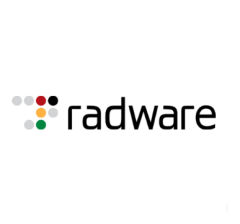






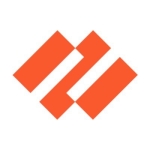
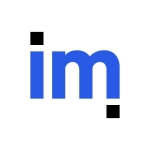


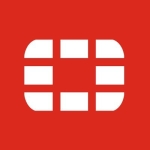
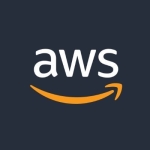
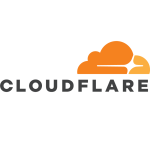
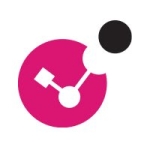

Hi, As to the comment regarding the pricing model - in 2023 our Cloud Application Protection services pricing model has been changed and simplified.
We now offer only three plans to choose from: Standard, Advanced, and Complete
Each plan is designed to cater to different cybersecurity needs and risk exposure, as well as different levels of managed services.
Please feel free to contact us to learn more